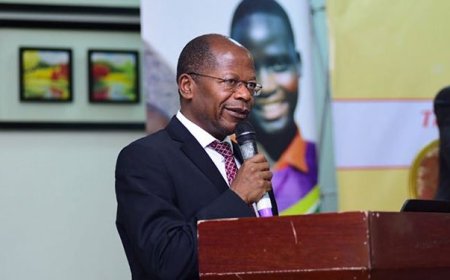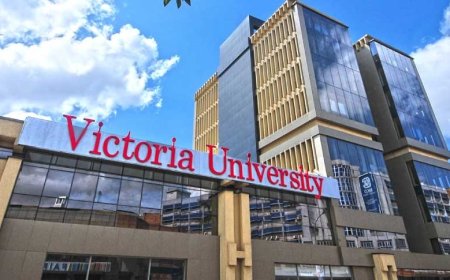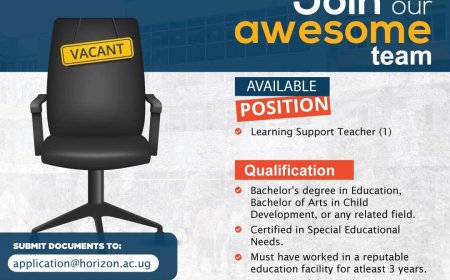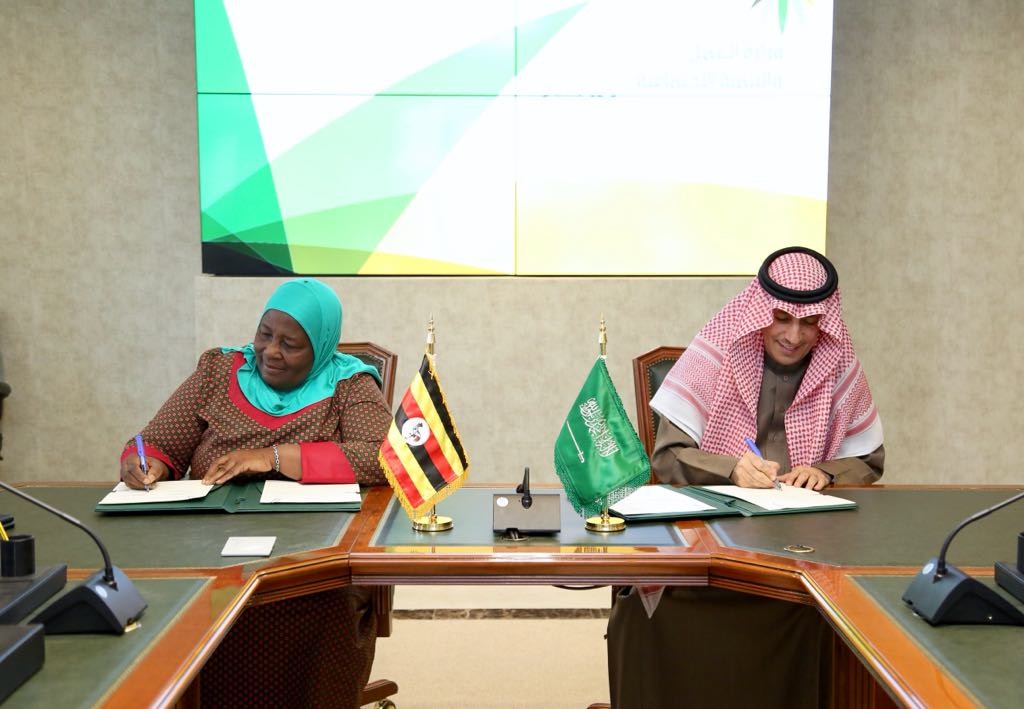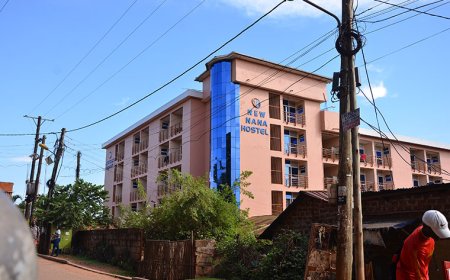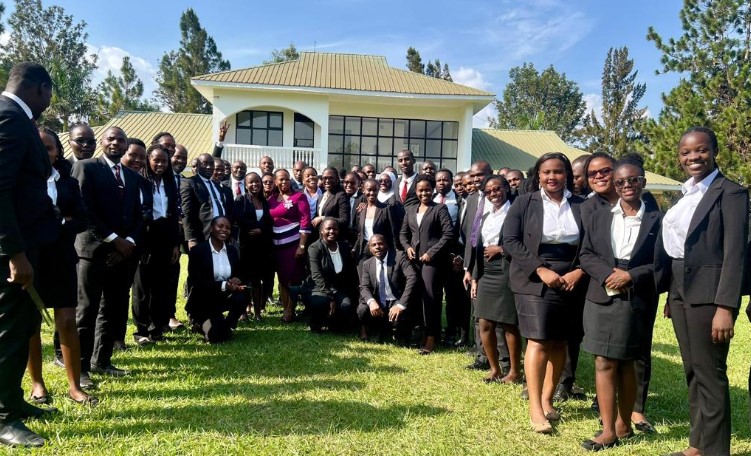The Rising Dream: How East Africa Is Building a New Era of Higher Education

By Potter Admin | Special Feature – Education & Development Desk
In a continent often defined by its youth, East Africa is steadily shaping its identity as a region of learning, innovation, and opportunity. Across Uganda, Kenya, Tanzania, Rwanda, and beyond, the dream of higher education is being reborn — more connected, more digital, and more regional than ever before.
When the curtains rose at the recent East African Community Higher Education Area (EACHEA) Convention, one theme dominated the room: integration through knowledge.
“Education is the new oil of our region,” says President Yoweri Kaguta Museveni
Fronting the regional campaign for education, Uganda’s President Yoweri Kaguta Museveni reaffirmed his long-standing belief that higher education remains the most powerful tool for transforming East Africa into a self-sustaining bloc.
“For East Africa to be truly independent, we must produce our own scientists, engineers, teachers, and thinkers,” President Museveni said. “The power of knowledge is greater than any mineral resource — it is what builds lasting prosperity.”
His remarks captured the spirit of the summit, held under the theme “Harmonizing Higher Education for Regional Transformation.”
A United Academic Frontier
The East African Community Higher Education Area (EACHEA) initiative, launched under the Inter-University Council for East Africa (IUCEA), seeks to make university education in the region more uniform, competitive, and mobile. It aims to ensure that a degree earned in Kampala carries the same weight in Kigali, Nairobi, or Arusha.
Dr. Gaspard Banyankimbona, Executive Secretary of IUCEA, explains that the goal is not just alignment but academic freedom across borders.
“Our dream is for a student in Rwanda to enroll at a Ugandan university, do research in Kenya, and graduate with recognition across the region,” Dr. Banyankimbona told The Guardian. “Education must unite us — not separate us by borders.”
Already, several universities — including Makerere University, University of Nairobi, University of Dar es Salaam, Kampala International University, and Victoria University — are implementing credit transfer systems and research collaborations under the EACHEA framework.
Driving Skills for the 21st Century
The EACHEA framework comes at a crucial time when the global economy is shifting toward digitalization, entrepreneurship, and artificial intelligence.
According to Prof. Lawrence Muganga, Vice Chancellor of Victoria University Kampala, East Africa cannot afford to teach for yesterday’s jobs.
“We are living in an era where employers demand skill, creativity, and digital fluency,” Prof. Muganga said. “If universities don’t adapt, they will graduate students into unemployment. But if we embrace innovation, we can make East Africa the continent’s education powerhouse.”
Many institutions are already responding. Universities are redesigning curricula to integrate technology, artificial intelligence, and industry-linked training. Others, such as Mount Kenya University and University of Rwanda, are pioneering regional online learning models that allow cross-border students to attend classes virtually.
Quality and Harmonization: The Regulator’s Voice
As universities innovate, the region’s higher education regulators are ensuring that the quality of education keeps pace with the speed of change.
Prof. Mary J.N. Okwakol, the Executive Director of the National Council for Higher Education (NCHE) in Uganda, emphasizes that harmonization must go hand in hand with assurance of standards and credibility.
“We cannot talk about integration without talking about quality,” Prof. Okwakol said. “Our goal at NCHE is to ensure that every qualification, wherever it is earned in East Africa, meets the same high standard of excellence and global recognition.”
She added that NCHE is working closely with the IUCEA and other national regulators to align accreditation frameworks and qualification standards through the East African Qualifications Framework for Higher Education (EAQFHE).
“The student from Uganda should be able to use their degree to work or pursue further studies in Tanzania or Kenya without any barriers,” she explained. “That is the vision of the EACHEA, and it is achievable with quality as the foundation.”
From Harmonization to Transformation
At the heart of the EACHEA dream is a bold promise: that an East African degree should represent not just academic merit, but mobility, innovation, and relevance.
Hon. Dr. John Chrysostom Muyingo, Uganda’s State Minister for Higher Education, describes it as “the next logical step after the East African common market.”
“You can’t have an integrated economy without an integrated education system,” he said. “When we train together, we think together — and when we think together, we build together.”
This sentiment is echoed by Prof. Patrick Kyamanywa, Vice Chancellor of Kampala International University, who adds that regional collaboration is the “missing engine” of Africa’s educational renaissance.
“Our challenges — unemployment, inequality, under-skilling — are regional,” he said. “So, our solutions must be regional too.”
Students at the Centre
But the greatest beneficiaries of this movement are the students themselves.
At the EACHEA exhibition hall, young innovators showcased digital health apps, agritech models, and artificial-intelligence-driven classroom systems — proof that the next generation is not waiting for permission to change the world.
“I want to study in Rwanda, do my internship in Kenya, and start a business in Uganda,” said Peace Niyonsaba, a student entrepreneur from Kigali. “That’s what EACHEA is making possible.”
For others, the dream goes beyond borders — it’s about dignity and opportunity.
“I no longer see myself as just Ugandan,” said Isaac Okoth, a student at the University of Nairobi. “I am an East African student with the whole region as my classroom.”
Building the Infrastructure for Integration
To make this dream real, governments are investing in digital platforms for credit transfers, regional research funding, and shared data systems. The IUCEA, in partnership with national councils like NCHE, is developing the East African Qualifications Framework for Higher Education (EAQFHE) — a tool that will standardize degrees, diplomas, and professional certifications.
Development partners, including the World Bank, African Development Bank, and GIZ, have pledged continued support for projects that link higher education to employability and industrial growth.
The President’s Vision: Education as Sovereignty
President Museveni’s call to action struck a chord across the region. For him, the harmonization of higher education is not just about schooling — it is about sovereignty.
“When we train our own engineers, we stop importing skills,” he said. “When we train our own scientists, we stop importing knowledge. That is when we become truly independent.”
His remarks underscored a broader regional philosophy shared by leaders including President Samia Suluhu Hassan of Tanzania and President William Ruto of Kenya — both of whom have publicly emphasized the role of education in driving industrialization and integration.
A Dream Within Reach
The East African Higher Education Area represents more than an academic framework; it symbolizes a collective dream — one that sees universities not as isolated campuses, but as a regional ecosystem of innovation.
Dr. Banyankimbona sums it up best: “We are building a community of thinkers, creators, and change-makers. The East African student must be globally competitive but regionally grounded.”
The Future Is East African
As the EACHEA initiative gains momentum, the region stands on the brink of a transformation that could redefine Africa’s educational landscape.
In the words of President Museveni: “Our future depends on how we train our youth today. Education is the bridge between dependence and destiny.”
That bridge is now being built — one partnership, one policy, and one university at a time.
What's Your Reaction?













